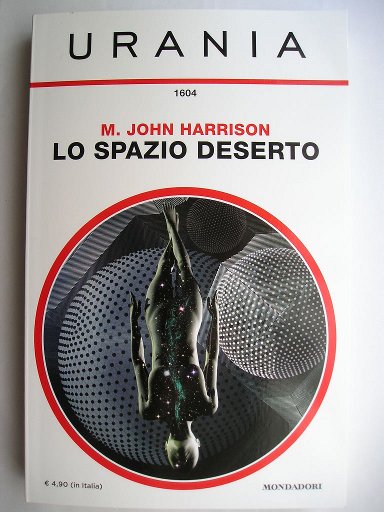
The novel “Empty Space” by M. John Harrison was published for the first time in 2012. It’s the third novel in the series of Kefahuchi Tract.
Anna Waterman managed to find a bit of stability in her life after her ex-husband, the physicist Michael Kearney, disappeared, presumed dead. But things always seem somewhat get complicated so she has a difficult relationship with his daughter and at a certain point she adds strange events such as seeing her house on fire and the feeling of Michael’s presence.
In the 25th century, the crew of the Nova Swing is looking for alien artifacts. In the course of that illegal activity they find a very special one. Meanwhile, the assistant has to investigate on the appearance of a number of corpses floating in the air.
After a few years , M. John Harrison came back to the Kefahuchi Tract with a novel that is partly the sequel to both “Light” and “Nova Swing“. However, those who read those two novels know that nothing in this series is simple, especially not linear. “Empty Space” takes various themes and many characters that have already appeared but not their protagonists, who have disappeared, presumed dead. Again, things are not so simple.
“Empty Space” partially continues the subplots started in the previous novels but in both the one set in the 21st century and in the ones set in the 25th century he leaps forward in time. All this doesn’t mena that this novel has few links with the past, rather they form one great story that would be best to read all together to try to get some orientation in its complexity.
The structure of “Empty Space” is more similar to that of “Light” than to that of “Nova Swing”, in the sense that there’s a subplot set in the 21st century and other subplots set in the 25th century. Again, the link is the mysterious cosmic anomaly called Kefahuchi Tract.
The style of “Empty Space” is the same already experienced in the previous novels. The plot is in many ways loose, fragmented in episodes that sometimes seem to have no connections with the rest of the story. There’s actually a sort of path, although far from linear, but even if there is a conclusion the basic elements of all the series remain unexplained.
If you look for a story that has a resolution in which you can find answers to its questions, the novels of the Kefahuchi Tract are not for you. Even at the end of the third novel, don’t expect to understand the nature of this cosmic anomaly or to find out who is the entity known as Shrander and occasionally with many other names.
At certain times, the impression is that “Empty Space” doesn’t go foward in the story but somehow back with a thousand connections to events, people and cats of the previous novels. Anna Waterman’s behavior is emblematic as she remarried and had a daughter yet again after many years she feels the presence of her former husband Michael Kearney.
Anna’s story isn’t linear because on one hand she looks into her former husband’s past, so much that she gets interested in his old research, but on the other hand she has a vision of her house on fire but that doesn’t exist, at least in the present. Again, there’s a potential event that is not necessarily connected to Anna’s timeline. Maybe it’s just an illusion but reality as it’s normally conceived is an illusion.
Of the three novels, “Light” is one in which the quantum physics elements are most explicit but the whole series seems to be built as a set of quantum events. The stories told by M. John Harrison don’t have a strict progression of cause and effect. Instead, there are individual events that are not necessarily fixed and may connect to other very far away in space and time.
In my opinion, “Empty Space” is better than “Nova Swing”, which in the end was a bit limited to be part of a series such as the Kefahuchi Tract. “Light” still seems to me the most brilliant of the series, with its many elements and inspirations. In “Empty Space”, M. John Harrison is less fanciful but this novel has the advantage of strengthening the previous ones with many links to them.
If you liked the previous novels in the Kefahuchi Tract serie you’ll probably like “Empty Space” as well, otherwise probably M. John Harrison’s style is not for you. If you haven’t read the other novels, I recommend starting with “Light”.

